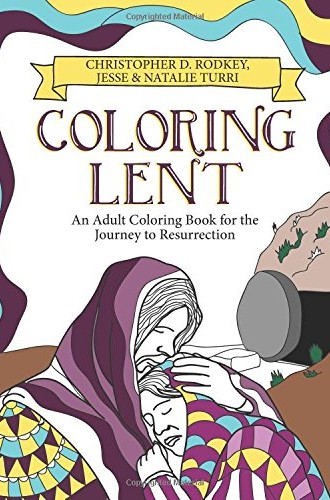Not your kindergartener’s coloring book
Should I let my child color pictures of Jesus on the cross?
I anticipate that when I tell my kindergartener I’ve decided to color with her every evening for the next 46 days, she will be thrilled. This idea was sparked by Coloring Lent, an illustrated journey through salvation history written by pastor and theologian Christopher Rodkey. The simple but evocative drawings by Jesse and Natalie Turri each share a page with a brief biblical reflection. Some of the words are purely narrative: “The Israelites followed the Cloud through the wilderness.” Others are more theological, like this riff on Isaiah 52 and 53: “He will be like the sacrificial animal led to the slaughter to untangle the human logic of violence. The Cloud will negate Itself by pouring out into flesh and into death.”
There is mystery in Rodkey’s writing, which alludes to theologians like Catherine Keller and James Cone. The book stretches resurrection into the lives of its readers, ending with a blessing and commission: “Now go, and break the seal of the entombments around you and others.” This is the only coloring book I’ve seen that has an index, extensive endnotes, and references to Thomas Altizer and Slavoj Žižek. The drawings are sparse enough to be colored cooperatively with a six-year-old. Certain images appear again and again—clouds, serpents, crosses—all of which are appropriate for Lent.
Yet, I wonder what it will be like to color pictures of Christ suffering on the cross (of which there are several in this book). Will it be a deeply devotional act, or will it feel voyeuristic—or worse yet, trite? How will I help my daughter perceive that coloring a crucified Jesus is qualitatively different from coloring Doc McStuffins or Hello Kitty?





